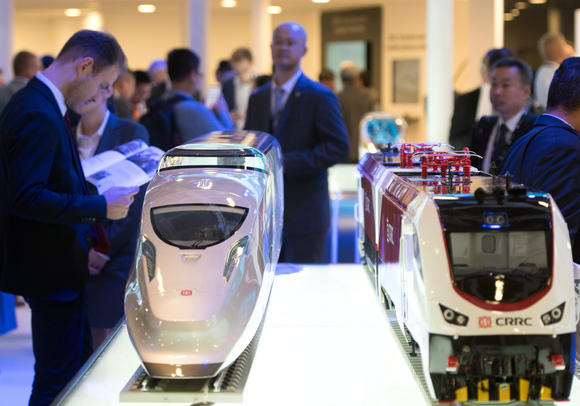CRRC, the world’s largest supplier of rail transit systems, is expecting to complete the first sample maglev train by 2020 and is hoping to test it on a track in east China’s Shandong Province, reports People’s Daily Online.
In the 1970s and 1980s, countries like Germany, Japan and the United States started trying to develop maglev transportation systems. Japan’s Yamanashi Maglev Test Line shocked the world with a speed of more than 500 km / h. In comparison, China’s conventional trains at that Time could only reach average speeds of 60.3 km / h.
High-speed maglev technology raises the prospect of faster travel across China. Whereas conventional train features tried and tested technology, are safe and have good interoperability, maglev trains can offer higher speeds, easier travel over gradients, and have more route options.
Shares in Chinese train manufacturer CRRC jumped Monday in Hong Kong as investors welcomed the announcement of expansion plans in Europe and Australia.
After Friday’s close, CRRC said a joint venture between subsidiary CRRC Changchun Railway Vehicles and an Australian company has won an order from state of Victoria to supply subway trains. The Chinese company will take a 45% slice of the 2 billion Australian dollar (US$1.49 billion) project. It will build 65 trains over the next six years. CRRC will be responsible for design, manufacturing and testing of the rolling stock. In addition, it will invest to A$15 million in the joint venture, holding 10% stake in the joint-venture company.
Also, on Sunday, CRRC announced that its subsidiary CRRC Zhuzhou Locomotive is planning to buy Skoda Transportation, a Czech rival.
CRRC is benefiting from the yuan’s fall against the U.S. dollar. Foreign orders for rolling stock lift the company’s dollar revenues, boosting the company’s profit in yuan terms.

Brian Wang is a Futurist Thought Leader and a popular Science blogger with 1 million readers per month. His blog Nextbigfuture.com is ranked #1 Science News Blog. It covers many disruptive technology and trends including Space, Robotics, Artificial Intelligence, Medicine, Anti-aging Biotechnology, and Nanotechnology.
Known for identifying cutting edge technologies, he is currently a Co-Founder of a startup and fundraiser for high potential early-stage companies. He is the Head of Research for Allocations for deep technology investments and an Angel Investor at Space Angels.
A frequent speaker at corporations, he has been a TEDx speaker, a Singularity University speaker and guest at numerous interviews for radio and podcasts. He is open to public speaking and advising engagements.


